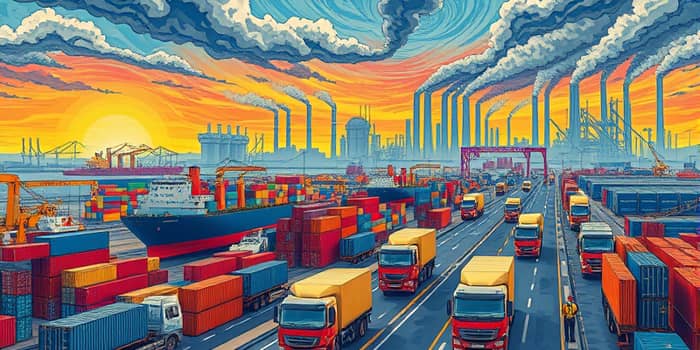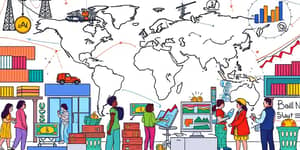In recent years, global supply chains have faced unprecedented disruptions that continue to affect the availability of goods and services worldwide. These challenges began long before the COVID-19 pandemic, but they were significantly exacerbated by it.
Industries from manufacturing to retail have been compelled to adapt to a new normal, facing hurdles that are both immediate and ongoing.
As the landscape of global trade shifts, it becomes essential to understand the various factors contributing to the continued struggles of supply chains.
From labor shortages and geopolitical tensions to rising costs and inflation, various elements intertwine to create a complex web of challenges.
This article explores the ongoing struggles of global supply chains and highlights the key obstacles that businesses face during this transformative period.
Understanding these issues is crucial for stakeholders seeking to navigate the current economic environment.
The Lasting Impact of the Pandemic
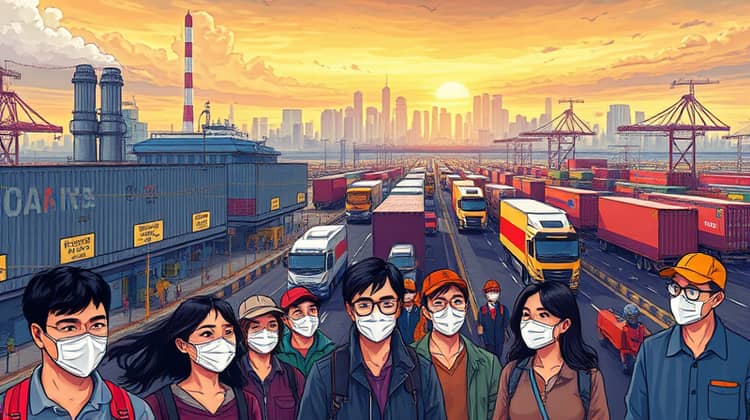
The COVID-19 pandemic brought global supply chains to their knees, revealing vulnerabilities that many companies were blissfully unaware of until it was too late.
Lockdowns in various countries disrupted manufacturing and distribution processes, leading to shortages of raw materials and finished goods alike. As factories shuttered, transportation routes became congested, and essential goods became scarce.
The ripple effects of these disruptions extended far beyond the immediate shutdowns. As consumer demand surged post-lockdown, businesses struggled to keep pace, leading to further imbalances in supply and demand.
Companies found themselves reevaluating their supply chain strategies, prioritizing resilience over mere efficiency.
Additionally, the global workforce was significantly affected by the pandemic, with a notable portion of the labor force either incapacitated by illness or reassessing their career choices.
This led to a shortage of skilled workers, further complicating recovery efforts. In this post-pandemic climate, organizations must adapt to the changes that have arisen, understanding that the impacts of the pandemic will be felt for years to come.
Labor Shortages and Strikes
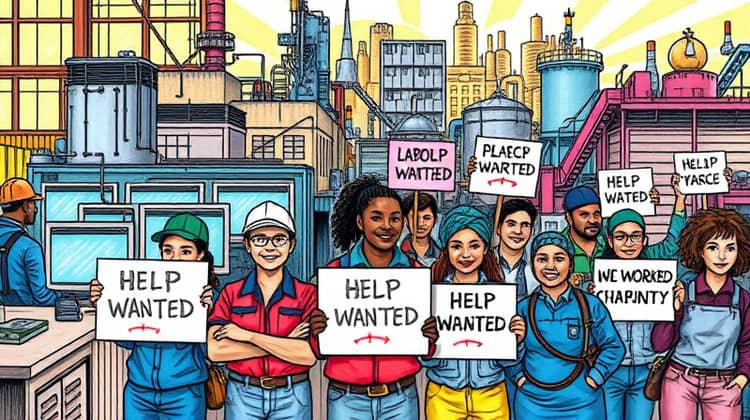
As industries attempt to recover from the pandemic's consequences, a troubling trend has emerged: labor shortages are plaguing many sectors.
Companies are facing difficulties in hiring enough personnel, which hampers their capacity to produce and distribute goods effectively.
This shortage of workers is not only due to health concerns stemming from the pandemic but also reflects changing attitudes toward work, as many individuals now prioritize work-life balance and seek better compensation.
Moreover, strikes and labor disputes have also become more prevalent as employees advocate for better pay and working conditions. This has led to further interruptions in production and distribution, creating a volatile environment for supply chains.
A few factors driving the labor shortages include an aging workforce, shifts in immigration policies, and increased competition for skilled labor.
Companies are now being forced to reevaluate their hiring practices and compensation structures to attract and retain talent.
- Increased demand for higher wages
- Better working conditions
- Desire for flexible work arrangements
- Aging population
- Rise in early retirement
These labor shortages, paired with the demand for improved conditions, create a perfect storm for supply chains, making it difficult for businesses to meet consumer expectations.
As companies navigate these challenges, there is an urgent need for innovative solutions to attract and retain workers.
Geopolitical Tensions
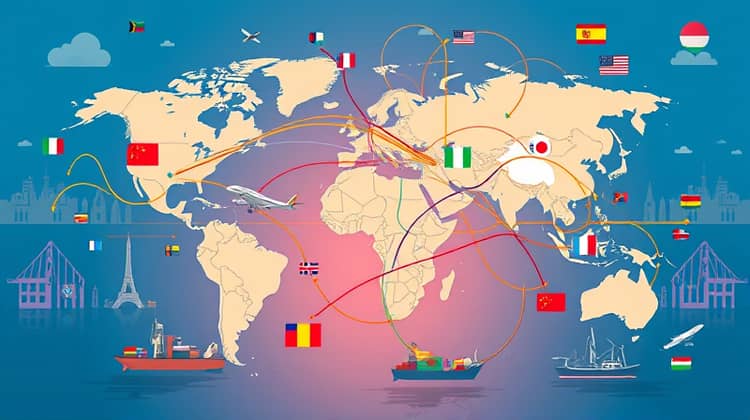
In an interconnected world, geopolitical relations significantly impact global supply chains. With tensions rising between nations, notably concerning trade policies and tariffs, companies find themselves at the mercy of political decisions that can disrupt established supply routes.
Trade wars, such as those seen in recent years, lead to uncertainty for businesses that rely on international trade.
As tariffs are imposed and trade agreements shift, the costs of goods fluctuate, ultimately affecting prices and availability for consumers.
- Trade restrictions and tariffs
- National security concerns
- Political instability in supplier countries
- Sanctions impacting trade relations
- Bilateral trade agreements
The long-term solution for businesses may lie in diversifying their supply chains and investing in relationships across multiple countries.
This could mitigate risks related to geopolitical tensions while ensuring greater flexibility in changing environments.
The ability to pivot in response to political changes will be crucial for future supply chain resilience. Stakeholders must remain vigilant as these geopolitical dynamics unfold, which could shape the future of international trade.
Transportation Bottlenecks
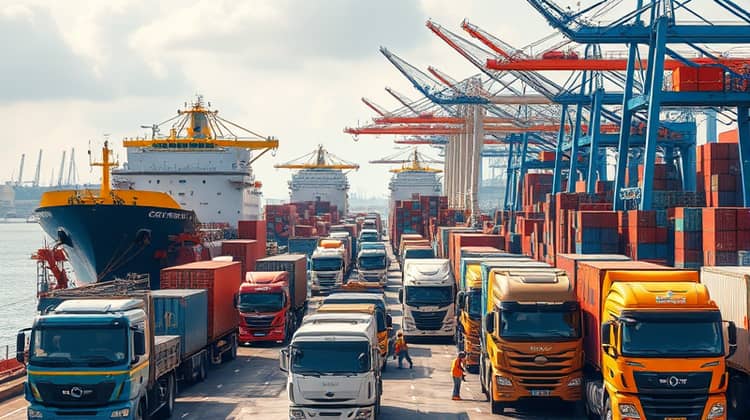
Transportation systems, both internal and external, are facing bottlenecks that compromise the efficiency of supply chains.
Ships sitting idle at ports due to congestion, a lack of trucking capacity, and delays in customs processes have all contributed to slower delivery times and increasing costs.
In light of these issues, businesses are forced to rethink their distribution methods, often opting for more expensive solutions to bypass the bottlenecks.
This leads to increased retail prices, further straining consumers who are already feeling the pinch from rising costs.
- Congestion at major ports
- Shortage of shipping containers
- Limited trucking logistics
- Delays at customs
- Increased fuel prices
These transportation challenges highlight the fragility of global supply chains and emphasize the need for comprehensive infrastructure improvements to enhance efficiency going forward.
Rising Costs and Inflation

As struggling supply chains continue to feel the effects of various compounding factors, rising costs and inflation have become prevalent concerns for businesses and consumers alike.
Prices for essential goods have surged, driven by various elements, including labor shortages and increased shipping costs.
The rise in material costs reflects the scarcity of resources, which has been aggravated by a variety of pandemically-induced disruptions.
Moreover, government stimulus measures aimed at revitalizing economies in the wake of COVID-19 have contributed to increasing consumer demand.
However, supply chains have struggled to keep pace with this rebound, leading to shortages that exacerbate price increases.
As inflation rises, consumers face higher prices for a wide range of products, creating added pressure on their spending habits.
Many businesses are confronted with a dilemma as they navigate these cost increases. On the one hand, they must maintain profitability; on the other hand, they must provide affordable options for consumers who are already burdened by higher costs.
Balancing these competing priorities will be critical for businesses going forward, as sustained inflation can threaten overall economic stability.
The increased costs have prompted numerous companies to reconsider their pricing strategies, pass on these expenses to consumers, or find ways to absorb them without compromising product quality.
This ongoing dilemma indicates that businesses must be vigilant to maintain a competitive edge in a rapidly changing market.
Additionally, many organizations may have to explore alternatives for sourcing materials, potentially reevaluating supply partnerships to control costs better.
As companies navigate these complex challenges, a careful strategic approach will be essential to managing and containing rising costs. This may even be a time for innovation, seeking new suppliers or methods that can soften the blow of inflation on the bottom line.
The Shift Towards Localization

In response to the numerous challenges affecting global supply chains, many businesses are reconsidering their traditional reliance on international sources for goods and services.
The concept of localization is gaining traction as companies strive for decreased reliance on distant suppliers, ultimately enhancing resilience and flexibility.
Localization involves sourcing materials and labor closer to home, which can help mitigate the risks associated with extensive, complex supply chains that have proven vulnerable during crises.
By reshaping their supply chains to prioritize local resources, businesses can better respond to unexpected disruptions while also supporting local economies. A trend toward localization may be a defining characteristic of the post-pandemic supply chain landscape.
Technological Advancements and Challenges
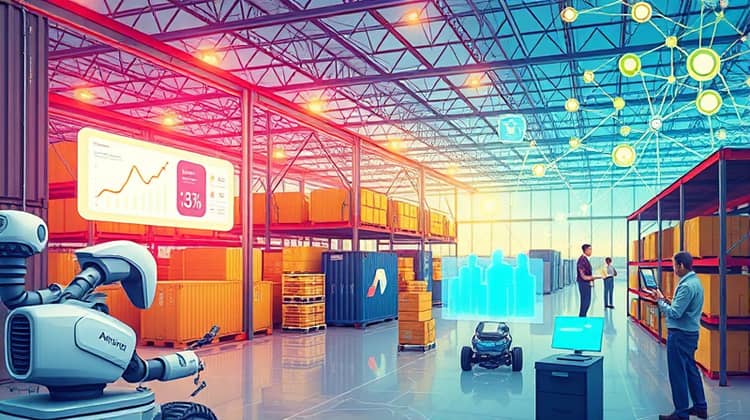
The role of technology in modern supply chains cannot be overstated.
From artificial intelligence to blockchain, companies are increasingly leveraging technological advancements to increase efficiency, enhance transparency, and reduce costs. However, embracing new technology also brings challenges that must be navigated carefully.
While technological innovations can streamline operations and improve decision-making processes, the implementation of these solutions may necessitate significant investments in both time and resources.
Organizations must not only adopt new technologies but also ensure their workforce is adequately trained to maximize their potential.
- AI and machine learning for demand forecasting
- Blockchain for supply chain transparency
- Automation in warehousing and logistics
- IoT devices for real-time tracking
- Big data for analytics and decision-making
Ultimately, businesses must stay ahead of the curve, continually adapting to the changing technological environment while balancing the investments required for successful implementation.
The benefits may be significant, offering enhanced capabilities to create more resilient supply chains.
Conclusion
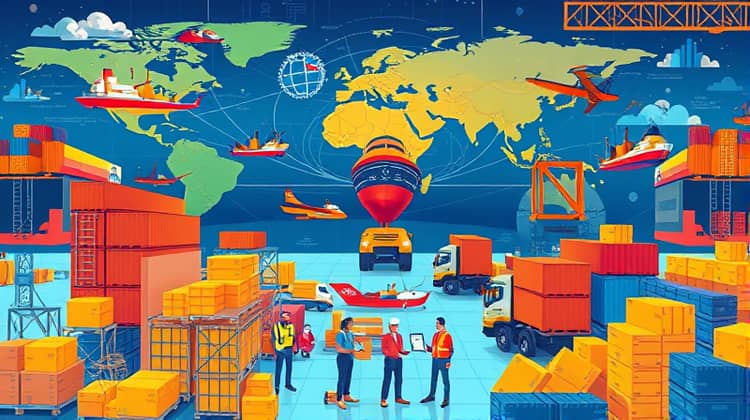
In conclusion, global supply chains are grappling with complex challenges that require innovative solutions and a forward-thinking mindset.
The lasting impact of the pandemic continues to reverberate through industries, revealing vulnerabilities and driving necessary changes in how business is conducted.
Labor shortages, strikes, geopolitical tensions, transportation bottlenecks, rising costs, and inflation are all issues that must be addressed collectively for global supply chains to regain their footing.
Resilience and adaptability will be essential as stakeholders seek to navigate these tumultuous waters, balancing immediate operational demands with long-term strategic visions.
Furthermore, the shift towards localization and the exploration of new technologies present both opportunities and challenges.
The ability to pivot and reimagine supply chain strategies will define the success of businesses in the coming years as they respond to the evolving landscape.
By recognizing and addressing these ongoing struggles, companies can plot a course toward recovery and growth, ultimately emerging from this crisis stronger and more capable of weathering future disruptions.

